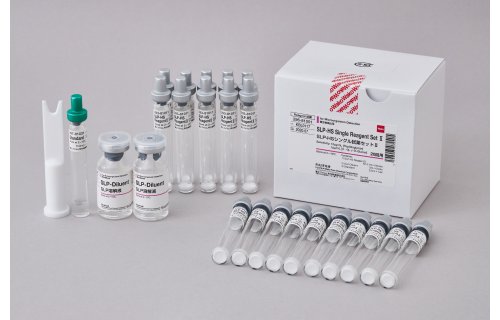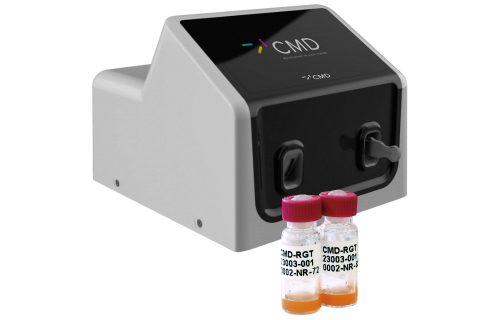Low Endotoxin Recovery- What does it mean? Why it is important to investigate?
Endotoxins (lipopolysaccharide, LPS) are large amphipathic molecules (containing both hydrophilic (water-loving) and hydrophobic (water-repelling) regions) that form aggregates in water. LPS is main component of the outer membrane of gram-negative bacteria, and can be released following bacterial cell death and lysis upon exposure to human serum, displaying pyrogenic properties that can trigger strong fever responses and adverse reactions. Due to its high toxicity, parenteral drugs and medical devices must be diligently screened for endotoxins to ensure patient safety.1
The Bacterial Endotoxins Test (BET) using Limulus Amebocyte Lysate (LAL) is widely used in the pharmaceutical and medical device industries for endotoxin detection and contamination prevention, and has been extensively described in pharmacopoeias. The LAL test is based on the unique horseshoe crab coagulation system, an enzymatic cascade reaction that is initiated by trace amounts of LPS, triggering clot formation that can be easily and efficiently quantified.2
What is Low Endotoxin Recovery (LER)?
Some studies have reported inaccuracies in LPS detection in certain biological products even when spiked with known amounts of endotoxin. This phenomenon, known as Low Endotoxin Recovery (LER) or loss of spiked endotoxin activity, occurs when a positive control sample shows a decrease in known endotoxin activity as measured by the LAL test, leading to false negative results, and is typically observed in samples of specific formulations that contain both a chelating agent and a detergent.3
Regulatory authorities consider this a potential safety issue due to possible underestimation of endotoxin levels during routine drug product testing,4 and require a demonstration of spike recovery in “hold time” studies. These studies involve incubation of known amounts of endotoxin in undiluted products prior to the actual LAL test to confirm the test’s suitability in a particular sample over time.5
Hold time studies for some biopharmaceutical products result in LER which is not resolved by the commonly used method of simple dilution. In order to prevent any inhibition or enhancement of the LAL reaction by the sample being tested, pharmacopeias outline the use of the interfering factors test.6
LER Mechanism: Interference in BET Testing and Biologically Inactive LPS
Chelating agents and detergents incorporated into pharmaceutical formulations can interfere with the LAL test, leading to inaccurate results. Sample interference in the LAL reaction is typically resolved by sample dilution.7 However, sample dilution does not always correct— and sometimes may even enhance— LPS masking due to interference with the formation of LPS aggregates.8 Because the biological activity of LPS (i.e., clot formation in the LAL test) is thought to be dependent on its aggregation status, monomeric LPS may escape detection by the LAL test.
Why it is important to investigate LER?
To ensure drug safety, it is imperative to thoroughly investigate LER and its potential implications. LER carries the possibility of false-negative results, where the presence of elevated endotoxin levels can go undetected, compromising quality control testing and disease prevention. Regulatory agencies’ recommendations outline requirements for hold time studies in order to establish proper procedures for product storage and handling. Lowering the temperature, increasing pH, and raising salinity are beneficial in reducing the impact of LER. Diluting the sample has been observed as effective, however the topic is still under discussions within the scientific community.
References:
- ICH Q14 Annex 14. Evaluation and recommendation of pharmacopoeia texts for us in ICH regions on bacterial endotoxins test general chapter. 2012. https://www.ich.org/page/quality-guidelines. Accessed 30 Apr 2024.
- Levin J, Babg FB. 1964. The role of endotoxin in the extracellular coagulation of Limulus blood. Bull Johns Hopkins Hosp 115:265-74, PMID: 14209047.
- Bolden JS, Warburton RE, Phelan R, Murphy M, Smith KR, et al. 2016. Endotoxin recovery using limulus amebocyte lysate (LAL) assay. Biologicals 44(5): p. 434-40, PMID: 27470947.
- Reich J, Tamura H, Nagaoka I, Motschmann H. 2018. Investigation of the kinetics and mechanism of low endotoxin recovery in a matrix for biopharmaceutical drug products. Biologicals 53:1-9, PMID: 29685804.
- Federal Drug Administration (FDA). 2012. Guidance for Industry. Pyrogen and Endotoxins Testing: Questions and Answers. [Webiste]. USHHS: FDA. https://www.fda.gov/regulatory-information/search-fda-guidance-documents/guidance-industry-pyrogen-and-endotoxins-testing-questions-and-answers. Accessed 28 Apr 2024.
- Tsuchiya M. 2019. Mechanism of Low Endotoxin Recovery caused by a solution containing a chelating agent and a detergent. Immunome Res 15:166.
- Tsuchiya M. 2019. Sample treatments that Solve Low Endotoxin Recoveryissues. PDA J Pharm Sci Technol 73(5): p. 433-442, PMID: 30902837.
- Gorman A, Golovanov AP. 2022. Lipopolysaccharide structure and the phenomenon of Low Endotoxin Recovery. Eur J Pharm Biopharm 180:289-307, PMID: 36272656.






